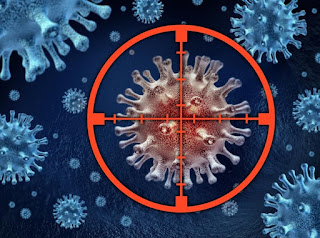Emerging Treatments for Mesothelioma
 There is no cure for mesothelioma, but clinical trials and experimental treatments offer hope for the future.
There is no cure for mesothelioma, but clinical trials and experimental treatments offer hope for the future.In the never-ending effort to eradicate cancer, there are medical and scientific researchers constantly looking for new ways to attack this deadly disease. Many of the commonly used methods of treating cancer today were once experimental, and the hope is that new, even more effective treatments can be developed.
Below, we’ve outlined some of the experimental treatments and medications that are being tested as cancer treatments today. Since there is no cure for mesothelioma, new treatments options, like the ones outlined below, can represent hope for an improved prognosis, or even a potential cure.
Clinical Trials
Top cancer centers throughout the country are performing clinical trials that provide mesothelioma patients with cutting-edge treatment options and hope for successfully fighting the disease. These trials also help advance research that is necessary for improving available treatments against mesothelioma and other asbestos cancers.
Immunotherapy
Immunotherapy represents an entire class of therapeutic strategies that target the immune system. Cancer-specific immunotherapy – also known as immuno-oncology – is one of the biggest areas of immunotherapy research. Depending on the specific type of immunotherapy involved, it can either kickstart the immune system’s response to cancer, enhance the already active immune system’s activities, or suppress the immune system in part or whole (e.g., to allow other treatments to work).
Gene Therapy
Gene therapy is a medical treatment that attempts to fix genetic problems and mutations by introducing properly functioning genes into the body. Other types of gene therapy cause cancer cells to become more vulnerable to standard treatments like chemotherapy.
Although gene therapy has been around for about 25 years – the first gene therapy experiment to be approved by the FDA was in 1990 – the use of gene therapy against cancer is only about 15 years old. As such, there are many avenues available for further research, study, and experimentation.
p53 Restorative Drugs
Tumor protein p53 – often referred to as TP53 or simply p53 – is a human gene that helps to suppress cancer. Cancer-related treatments using p53 are still in the early stages. Because p53 can help repair or kill cells with damaged DNA, there is a lot of promise.
Epigenetic Therapy
Epigenetic therapy is a growing area of focus for cancer research. Epigenetic therapy uses drugs to change a person’s epigenome – an individual’s record of chemical changes in their DNA – in an effort to treat certain conditions, such as cancer.
Research has shown that cancer often shuts down certain anticancer mechanisms in the epigenome, and figuring out how to prevent those areas from being turned off – and turning them back on when they are – could lead to a massive breakthrough in cancer therapy.
Photodynamic Therapy (PDT)
Photodynamic Therapy (PDT) is already used to treat a number of conditions, from acne to various forms of cancer. The treatment uses a drug known as a photosynthesizing agent combined with a specific wavelength of light to trigger a reaction that produces a high-energy form of oxygen (singlet oxygen) that reacts with cancer cells and kills them. PDT has been shown to be effective for treating mesothelioma, esophageal cancer, and non-small cell lung cancer (NSCLC).
Sources:1 American Cancer Society. Targeted Cancer Therapy.
2 American Cancer Society. What’s new in malignant mesothelioma research and treatment?
3 https://www.maacenter.org/treatment/emerging-treatments/








